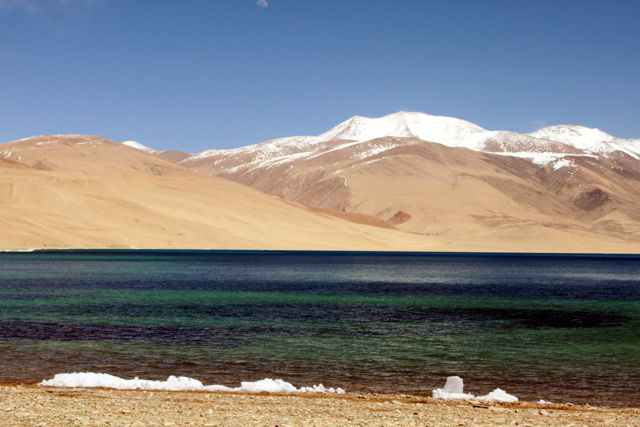
When we reach Tso Moriri, it feels eerily quiet and desolate. No tourists, no locals. And then we hear a feeble sound from the distance. A group of children are playing cricket on the banks of the lake (‘tso’ in the local language). And we start walking towards them. There they are, engrossed in their game, each wearing only a thin sweater on top of cotton shirts and drainpipe pants. Me, I want to weep for the cold.
It is still early in the season and it appears that the camp has not yet been set up at Tso Moriri. We have driven for seven long hours from Leh through dry brown roads. True, the Indus had given us company for most of way, snaking along the road like a shiny green ribbon. But I cannot bear the thought of driving back to Leh now, a journey of 250 kilometres. That apart, this place deserves more than a fleeting visit.
Tso Moriri, at an altitude of over 15000 feet, is just stunning. Surrounded by snow-capped mountains, the lake stretches on for over 28 kilometres and at its broadest, spans eight kilometres. I stand on the shore and watch the water change colour with the sun every minute; now a pale grey, suddenly a deep cobalt blue and then aquamarine. Shades I had only heard of are now playing themselves out in front of my eyes and I am greedy for more.
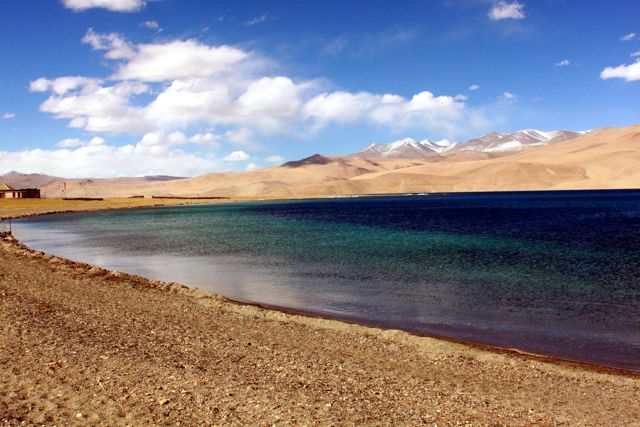
Suddenly, there is some bustle behind us, as a couple of trucks pull up with tents and supplies. It turns out that the camp – the only one allowed here – is to open in a couple of days. I send our driver, Murub, to negotiate and soon we have a deal. They pitch one tent for us and get the kitchen going. Which is a good thing, since breakfast is long forgotten and it is way past lunchtime.
We go for a stroll while lunch gets ready. The husband is keen to join in a game of cricket but the high altitude makes it tough to even breath deep or walk steady. Some portions of the lake are still frozen, although the native Brahmni ducks make their way placidly through the water.
By early evening, it gets so cold that I begin to question the wisdom of our decision to stay on. But at dusk, the snow peaks gleam golden, catching the last rays of the sun. The lake is perfectly still, reflecting the thick white clouds like so many fluffy pillows. The silence is absolute. And as I sip on hot chai, I think I could get used to this after all.
Another day, another lake.
Unlike Tso Moriri, Pangong Tso is abuzz with noise and activity. And why not? It has recently shot to fame as the location of the blockbuster movie 3 Idiots. Murub says, with part amusement and part dismay, that this has now become almost a pilgrimage spot for large groups of tourists.
Pangong has always been the more popular lake in Ladakh, the item to be checked off every visitor’s list. For one, it is much closer to Leh than Tso Moriri. And the drive is through the spectacular Chang La pass, which at almost 18000 feet, is one of the highest motorable roads in the world.
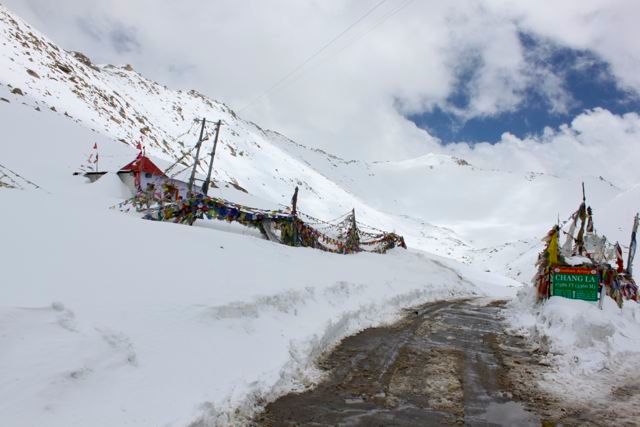
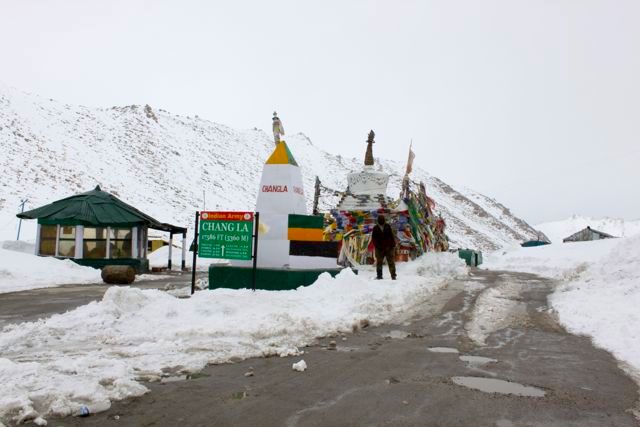
With plans to spend the night at Pangong, we start from Leh late in the morning, unlike peppy day-trippers who leave at 4 am. The mountains are covered with fresh snow, and we drive through a narrow road that is part earth, part slush. At Chang La, breathless and disoriented, we pose for the mandatory photographs with stilted smiles on our faces. The discomfort lingers long after we descend, but is forgotten at the first glimpse of Pangong, a sapphire band shimmering afar.
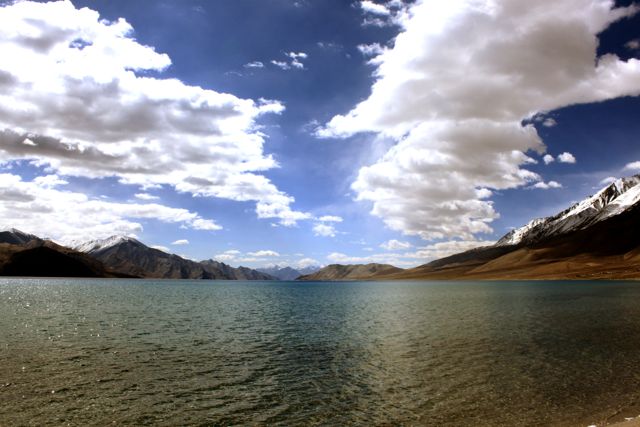
At Pangong, there are several camps already in business and some local homes have opened their doors to curious visitors. By the side of the lake, a child plays with flat stones, in his own version of the Buddhist meditative practice of stacking stones. A group of young men dares each other to wade into the freezing water, till one of them finally does it. Predictably, he does not last very long and I notice that his lips look almost as blue as the water by the time he steps out.
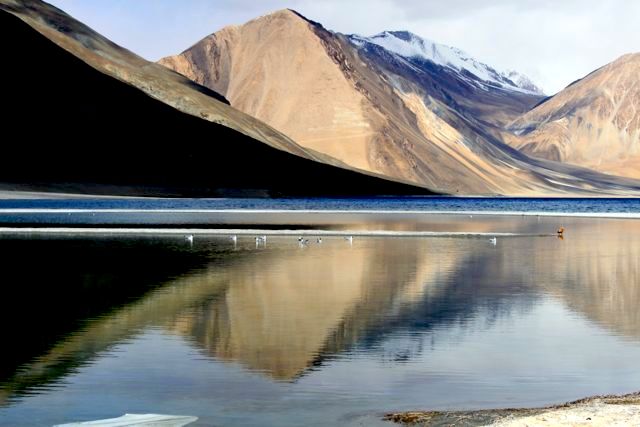
As at Tso Moriri, I could spend all evening here just seeing the varied blues of the lake. Pangong is much much longer, at over 134 kilometres, of which only one third is in India and the rest in Tibet. Apart from the brown-headed gulls that clamour for pieces of bread or biscuit that tourists throw their way, large herds of Kiangs (Tibetan wild asses) are usually found grazing on its banks.
Ladakh has a way of holding on to you and never letting go. Long after I am back in my urban jungle, I keep playing it all back in my mind. I remember the time I spent in meditation at Thiksey monastery, as the monks went about their morning prayers. And the long walks and lively chats with the vendors at the street market in Leh. Above all, I think of that evening at Tso Moriri. Who knew solitude could be so soothing?
***
Published in New Indian Express on May 25, 2014 as The waters of life…
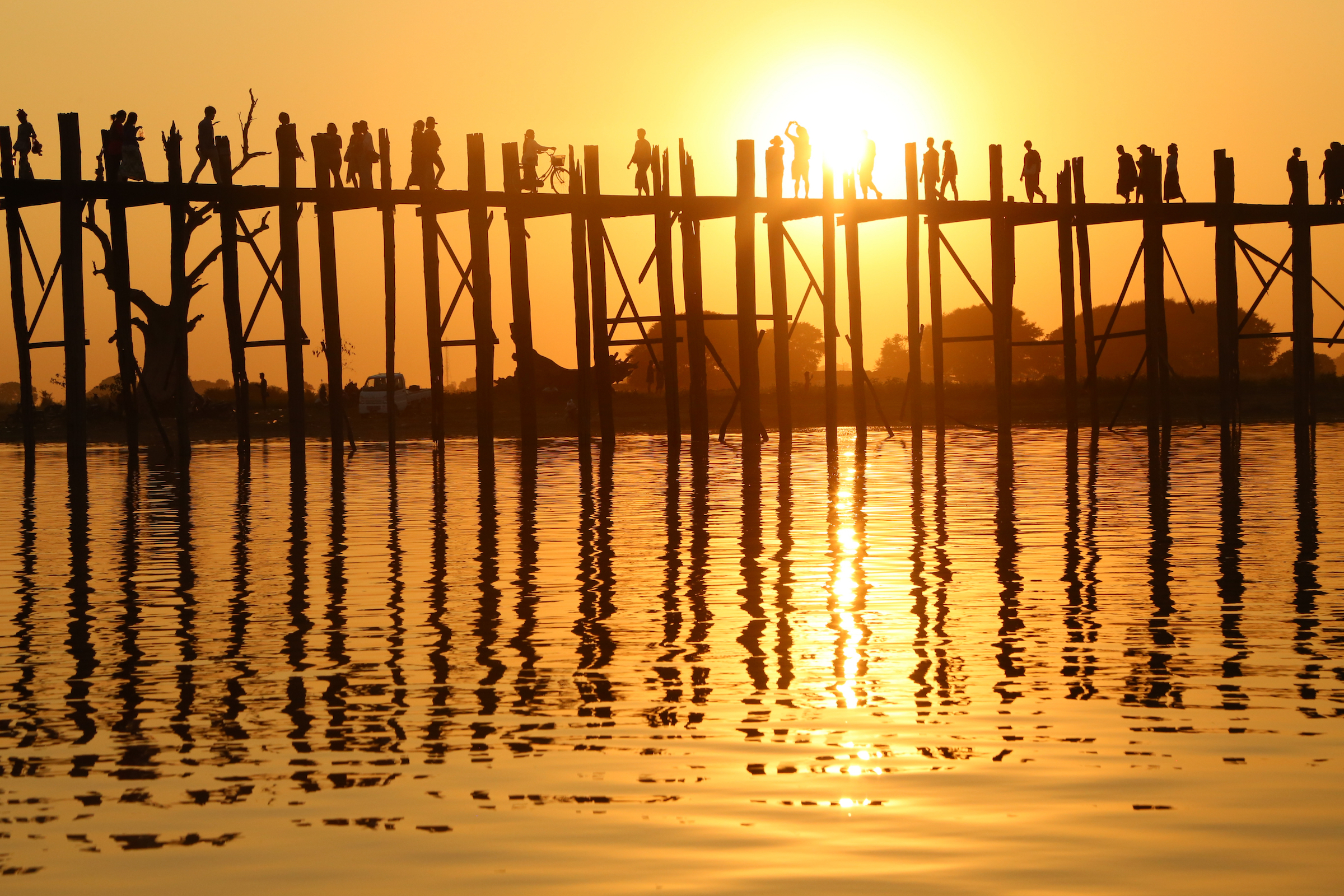
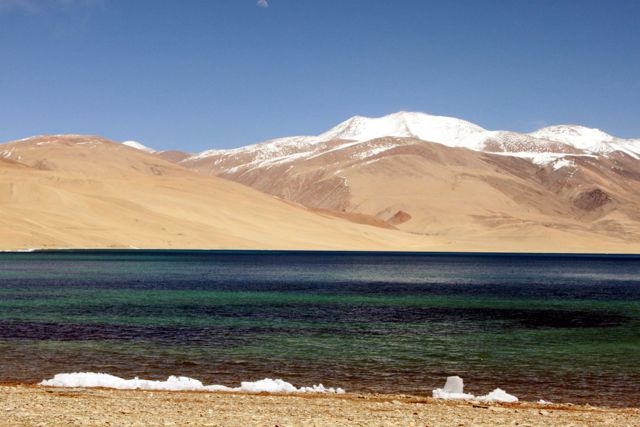
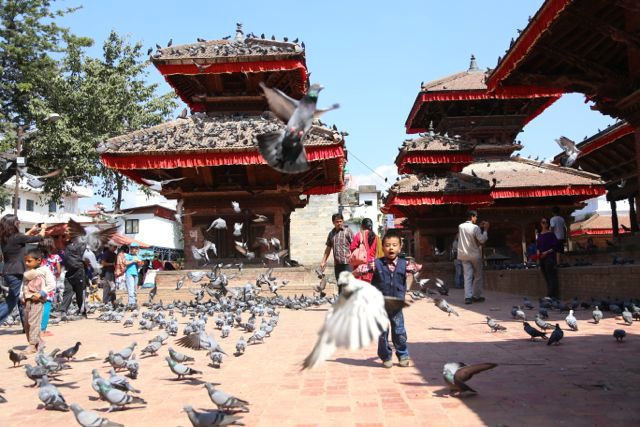

Wow, beautiful pictures and post.
Makes me want to go there!
Thanks, Ravi. That’s the best reaction a travel writer can hope for 🙂
Wow, that looks like nothing I’ve seen before!
Ladakh can be quite an ethereal experience, especially the lakes 🙂
So beautiful..Ladakh is like heaven on earth…
True that!
I am sure these pics are from past years,we keep checking everyday to see the routes.
Both lakes look so placid and beautiful!
Oh yes, they are really gorgeous. You can sit there and stare at them all day and never get bored (of course you will freeze to death but that is another story altogether 😉 )
Beautiful description. I have been to Ladakh and you made me revisit the place through this post.
Thanks, Chaitali. Every year during the peak Ladakh season, I think back on our holiday and yearn to go back 🙂
I have been to Ladakh; It seems like an epic final route to heaven! Peaceful, blissful and awestruck is what you feel around those beautiful landscapes and scenic wonders. I am sure God must be living around 🙂
I agree – Ladakh is one of the most beautiful landscapes ever. Blessed by god (but I wonder if the people living there think so!)
Absolutely blissful…love the pictures as well as your writing. I always planned to camp there, somehow it never happened…
Thanks, Siddhartha. I hope you get to visit Ladakh soon 🙂
love the pictures, love the write up…Have been to Leh but missed going to the lakes….regretting it even more now 🙁
Thanks, Nitin. That is a great excuse to go back to Ladakh 🙂
One of the best place in India to visit.